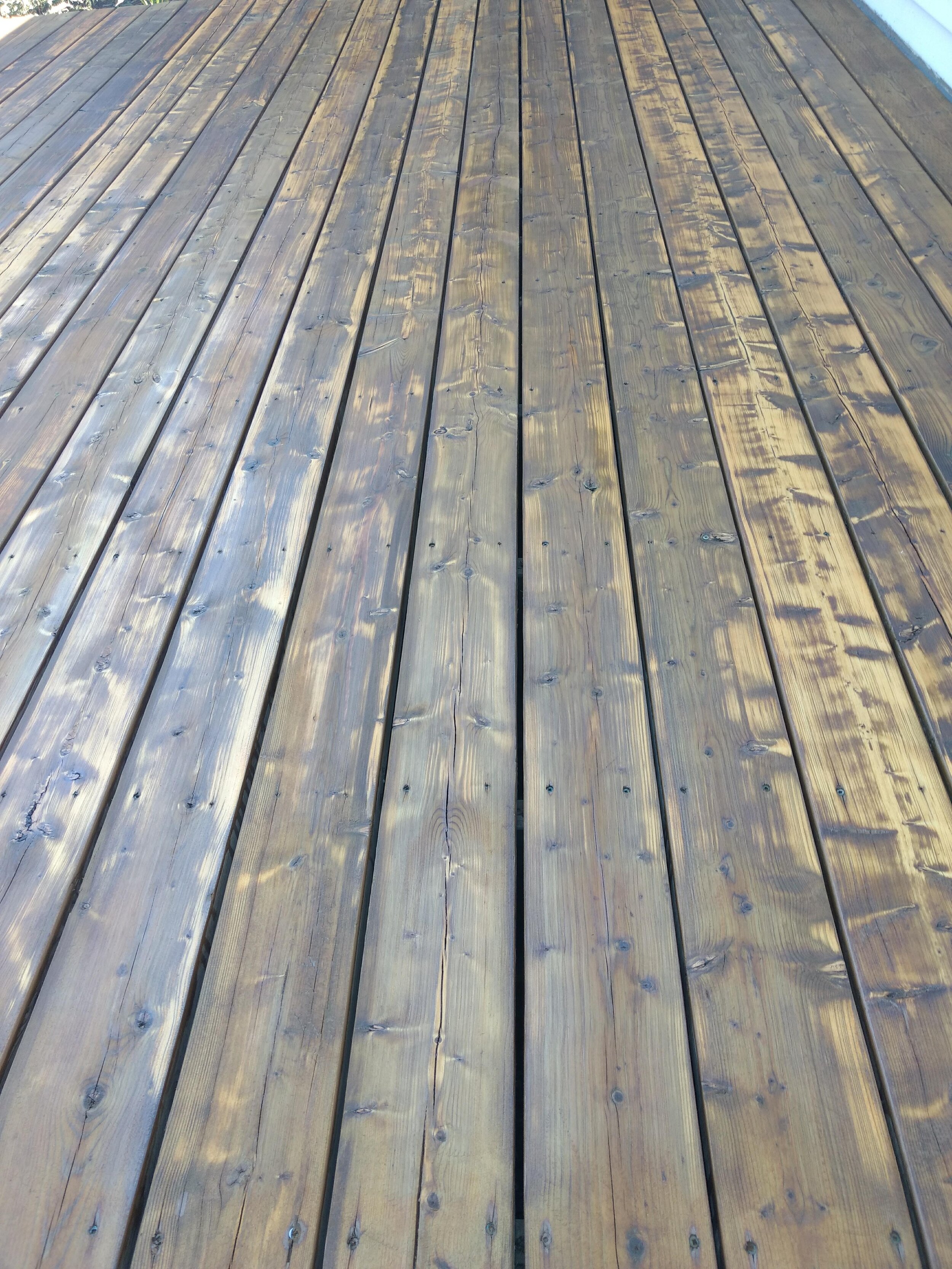
Never Peel Again: The Sand & Stain Blog
Every post, recommendation, and product we discuss is to help you on your journey maintaining your deck, fence, & exterior wood so it never blisters, cracks, or peels.
Never Peel Again: The Sand & Stain Blog
Brand new deck / old faded wood / peeling previous stain / unknown deck finish history—no matter where you are in your wood restoration & maintenance journey, we’re here to help. Scroll & enjoy!
Why Solid Stain / Paint Fail As Exterior Wood Coatings (And What To Do If Your Deck Has This Finish)
There is no question that solid stain is the absolute bane of everything we believe in at Sand & Stain. Our promise to you is captured right in our original tagline: ‘Never Peel Again’—and if there’s one thing we’re certain of, it’s that solid stain will peel in Canada, no matter who applies it.
Probably the biggest reason solid stain fails, is because it acts much like a paint opposed to a stain. Paint protects by forming an outer film coating and is built up with layers and is far too thick to ever penetrate the wood. That’s why when you see solid stains or paint on exterior wood like a deck or fence, it peels off in pieces / chunks and leaves completely bare wood behind.
I’m surprised solid stain is even classified as a stain—it really should be called a paint, because it basically is no different than a can of flat sheen exterior water based paint. Sometimes people ask why we don’t restore decks, fence, and siding projects with solid stain and paint anymore, and there are many reasons for that:
5 Reasons You Should Never Pressure Wash Your Wood Deck
You want the best for your deck in care, protection, and aesthetics. Washing seems like a no-brainer to maintain it, so why not make your job easier with the power of a pressure washer? Here are 5 reasons we don’t pressure wash decks in our business, and why we think you shouldn’t pressure wash your deck either.
NOTE: We focus on the maintenance and care of wood decks and do not recommend pressure washing any of them (Cedar, Ipe, Accoya, Kebony, Thermory Ash, etc.) Pressure washing may be perfectly fine for your composite or PVC deck.
Less Is More: Why One Coat Of Stain Conquers Two Against Deck Peeling
Before we get into why one coat is better than two to both protect your deck and prevent it from peeling, we need to go over a few assumptions about your deck, types of stain, and prep. If your deck consistently peels every year, no matter what you do, read our previous post, Why Your Deck Peels Every Year, for reasons about why that might be the case.
So, you invested good money into your brand new deck, or bought a house that came with a gorgeous deck in the backyard. You want to protect that investment as best you can, so the first inclination is to put as many protective layers on that wood as you can—’the more the better!’, you think to yourself.
Unfortunately, too much product is one of the surest ways to end up with a peeling deck—especially if it’s a thicker, water based formula.
Why Your Deck Peels Every Year
We get calls for staining brand new decks, restoring old faded gray wood decks, and everything in between. Without question, the number one reason people seek help for their deck is out of sheer frustration that their deck peels every single year, no matter what they do, or who they call.
Some feel gypped for buying the most expensive product in the store only to see it fail after its first winter. Others are completely discouraged their deck is chipping after spending countless hours sanding it. Neither are wrong to feel this way. There are many reasons a deck can fail and you might have everything exactly right except for one piece of it.
The two biggest reasons a deck peels are…
5 Reasons You Should Never Sand Pressure Treated Wood
You’ve got pressure treated wood and you want to maintain so it lasts and looks its best in the process. You may have heard or read in our articles that sanding prep work is essential before staining, sealing, or finishing a deck.
This is true to remove mill sheen on new cedar lumber, removing peeling stain from a deck, or periodically (after several years or re-coats with a penetrating oil) to restore it before staining it again. The exception to this is: pressure treated lumber.
Here are five reasons reasons you should never sand your pressure treated wood…





